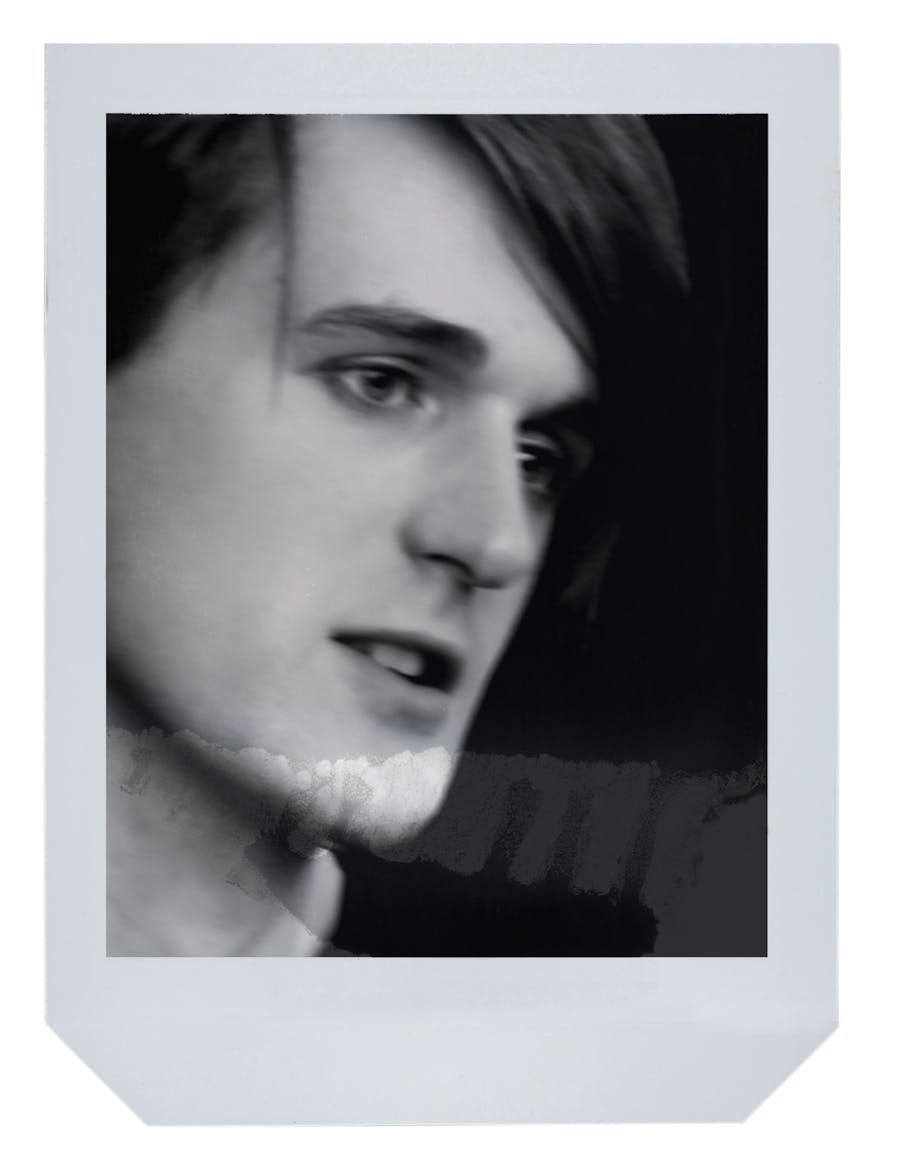From the Faces issue
Whether it’s Rosalía, Julia Fox, Bad Bunny, Skepta or Travis Scott – countless are the faces captured by the Polaroid camera of the Colombian American artist Matías Vásquez, better known as Stillz.
“The secret everyone’s talking about”, is how the young photographer and director has been described in the short time in which he has shown himself to be one of the most promising talents of his generation. At just 23 years old, Stillz is cultivating anonymity as much as he is chalking up the successes: among them the video for Rosalia’s “Candy”, Omar Apollo’s “Invincible” and “That’s What I Want” for Lil’ Nas. But it was his early collaboration with Bad Bunny, capturing the underground skater scene in New York, that propelled him to fame. Since the making of his video “Vete” in 2020, Stillz has made a dozen more for the Porto Rican superstar, most recently this year’s “Mosco Mule” and “Where She Goes”. Alongside this, he’s constantly developing projects and collaborations, characterised by his singular, explosive imagination and his signature arty, offbeat approach. As reference points he cites director Spike Jonze, the photographer Jason Peterson, as well as paintings and old movies. His predilection for celluloid and for vintage aesthetics is on ready display in his first book One, whose images are a homage to the most famous instant camera shots of the 70s, those of Andy Warhol’s Factory and the joyful clique found within it.

Photographer STILLZ
New-York, 1970
The arts scene of the city that never sleeps is beginning to burn brightly. When its luminaries are not dancing the night away at Studio 54, they’re hanging out at the loft of the artist, photographer, model and publicist Andy Warhol. In this ground-breaking underground factory, experiments into new ways of making art are afoot, and it’s teeming with visitors seeking “fifteen minutes of fame” by having their picture taken. The advent of mass consumer culture marks a sea change in the way we market the image. Andy Warhol has understood this perfectly – and his Factory becomes a workshop for the creation of idols. His credo? Come in a nobody, come out a star. His weapon of choice? A Polaroid Big Shot whose invention revolutionised modes of artistic production. With his trusty camera, Warhol managed to combine his two obsessions: celebrity and mass-produced art. He set about snapping the leading cultural figures of the era: William Burroughs, Debbie Harry, Liza Minnelli, Truman Capote, Joseph Beuys, Jean-Michel Basquiat and Robert Mapplethorpe, himself an adept of the Polaroid. During this period Warhol used his camera as a “pen and paper” to create his famous screen prints and didn’t yet consider these prints as works in and of themselves. Despite this, these raw, spontaneous, unique images would end up offering us the most vivid, captivating portrait of the New York art scene in the 1970s, whose legacy remains palpable to this day.
New York, 2023
If Warhol was hooked on celebrity culture and self-portraiture, Stillz is a bit more discreet. Nonetheless, he’s a true inheritor of Warholian photography. More than 50 years after the Factory, he is creating an immersive, authentic portrait of the contemporary American music scene. Everything began with “random” evenings during which Stillz photographed familiar or famous faces with the Polaroid Big Shot which never leaves his side. But it was his meeting with Matt Zingler, the CEO of Rolling Loud, an internationally known hip hop festival, which galvanised him to create own series. From one town to the next Stillz has been taking photos of the greatest names today, in the domains of fashion, music, and sports – his portrait of Dennis Rodman being a notable example. With more than 2000 photos, he is now releasing his first book, One, which is conceptualised as a kind of celebrity phone book –with Julia Fox, Kanye West, Cardi B, Travis Scott, Mike Tyson, Miley Cyrus all findable within. Not bad.
In this particular phone book however, there’s no contact details, no phone number or address, let alone any mention of an Instagram account – just a name and a date. Spontaneous close ups taken with a flash. As in the work of his predecessor, every image is unique, raw, intimate – and yet elusive. As for the most part the celebrities in the book are veritable icons, these images themselves become almost objects of worship. Stillz cultivates brilliantly the paradox of our epoch and the Instagram era, which was the founding principle of the Factory – that of a star system at our finger tips, which we worship from the corner of our eye, but which can never quite be reached. But far from the likes, filters, and glossy uniformity of that we associate with star system images, Stillz gives character to these shots and returns to the essential: the individual – and what endows them with their identity - their face. In wanting to “create a personal brand at a precise time in musical culture”, Stillz manages to put Warhol’s work directly in his line of sight, and create his own manifesto, that of an artist witnessing a city in full creative bloom, whose most famous inhabitants, caught forever in these Polaroids, will undeniably go down in history.









